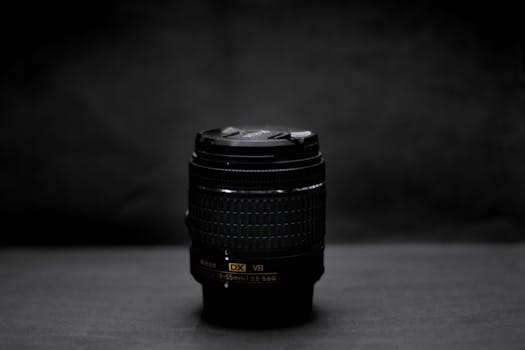Is your TV's sharpness setting ruining your favorite shows? Many TVs ship with sharpness cranked up, creating artificial edges and unwanted artifacts. Learn how to adjust your TV's sharpness for a more natural and enjoyable viewing experience.

TV Sharpness: Is It Ruining Your Viewing Experience?
Have you ever noticed a strange, almost artificial look to the images on your TV? Perhaps you've seen halos around objects or a grainy texture that just doesn't seem right. The culprit might be hiding in plain sight: your TV's sharpness setting. Often overlooked and misunderstood, the sharpness control can significantly impact your viewing experience, and in many cases, negatively.
The Problem with High Sharpness
TV manufacturers often ship their products with the sharpness setting cranked up. This is because, in a brightly lit showroom, a sharper image can appear more appealing and grab the attention of potential buyers. However, at home, this artificially enhanced sharpness can create several problems:
- Artificial Edges: High sharpness adds contrast to the edges of objects, making them appear overly defined and unnatural. This can create a harsh, digital look.
- Halos and Artifacts: Overly sharpened images can exhibit halos around objects, especially bright ones. You might also see other visual artifacts, such as jagged lines or a grainy texture.
- Loss of Detail: Counterintuitively, high sharpness can actually reduce perceived detail. The added contrast can mask subtle nuances and textures in the image.
- Eye Strain: Watching an overly sharpened image for extended periods can cause eye strain and fatigue.
Understanding What Sharpness Actually Does
Sharpness doesn't actually add detail to an image. Instead, it manipulates the contrast between adjacent pixels. A higher sharpness setting increases the contrast, making edges appear more defined. While this can seem beneficial at first glance, it's essentially an artificial enhancement that doesn't exist in the original source material. Think of it like adding too much seasoning to a dish – it overwhelms the natural flavors.
# How Sharpness Affects Different Content
The impact of sharpness varies depending on the content you're watching. For example:
- Movies and TV Shows: High sharpness can detract from the cinematic experience, making the image look less natural and more like a video game. It can also reveal flaws in the source material, such as compression artifacts.
- Video Games: While some gamers prefer a sharper image, excessive sharpness can lead to eye strain during long gaming sessions. It can also make the game look less realistic.
- Sports: High sharpness can make fast-moving objects appear jittery and less smooth. It can also amplify noise and artifacts in the broadcast signal.
Finding the Optimal Sharpness Setting
So, how do you find the sweet spot for sharpness? Here's a step-by-step guide:
1. Access Your TV's Picture Settings: Navigate to your TV's menu and find the picture settings. The exact location of these settings will vary depending on your TV model.
2. Find the Sharpness Control: Look for the sharpness setting, which is often labeled as "Sharpness" or "Edge Enhancement."
3. Use a Test Pattern (Optional): You can use a sharpness test pattern to help you fine-tune the setting. These patterns are readily available online and can be displayed on your TV via a USB drive or streaming device.
4. Start with Zero (or Low): The best starting point is often to set the sharpness to zero or a very low value. This will give you a clean, unadulterated image.
5. Gradually Increase Sharpness: Slowly increase the sharpness setting, paying close attention to the edges of objects. Look for halos, jagged lines, or other artifacts.
6. Stop When It Looks Natural: The goal is to find a setting that adds a subtle amount of definition without introducing any unwanted artifacts. When the image looks natural and pleasing to your eye, you've found the optimal setting.
7. Consider Different Content: You may need to adjust the sharpness setting slightly depending on the content you're watching. For example, you might prefer a slightly higher sharpness setting for video games than for movies.
# Practical Tips for Adjusting Sharpness
- Use a Familiar Scene: Choose a scene from a movie or TV show that you're familiar with and that contains a variety of textures and details. This will make it easier to spot any artifacts or unnatural edges.
- Sit at Your Normal Viewing Distance: Adjust the sharpness setting while sitting at your normal viewing distance. This will ensure that the setting is optimized for your viewing conditions.
- Don't Be Afraid to Experiment: There's no one-size-fits-all setting for sharpness. Experiment with different settings until you find one that you're happy with.
- Trust Your Eyes: Ultimately, the best sharpness setting is the one that looks best to you. Don't be afraid to deviate from the recommendations if you prefer a slightly different look.
Conclusion
Adjusting your TV's sharpness setting is a simple but effective way to improve your viewing experience. By understanding what sharpness actually does and how to find the optimal setting, you can eliminate unwanted artifacts, reduce eye strain, and enjoy a more natural and immersive image. So, take a few minutes to fine-tune your TV's sharpness, and you might be surprised at the difference it makes.
